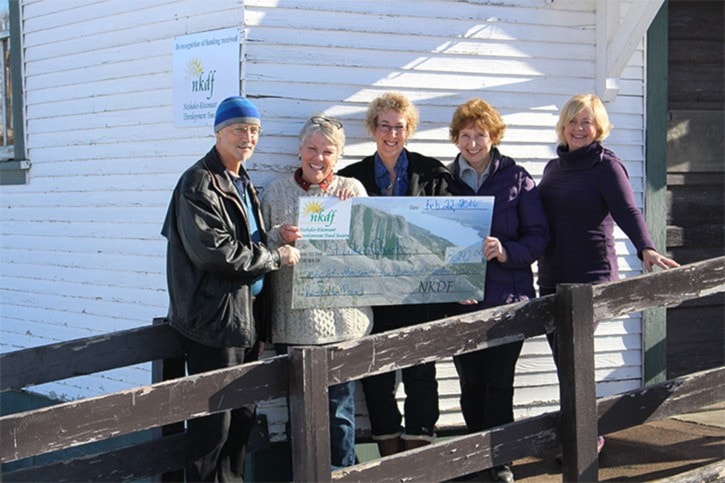St. Luke’s Church on the Lake, originally built in 1916 by the early settlers who came to the shores of Francois Lake, is undergoing a restoration project.
The building’s foundation and roof have already been replaced, and work will continue in the spring to restore the windows and door.
“There will be more detail work done in the next few years, in efforts to maintain and preserve the style and beauty of the original building,” explained Donna Fowler, member of the St. Luke’s Heritage Society, a non-profit organization that looks after the church. Over $30,000 has been donated by local government and agencies toward the restoration project.
The Northern Development Initiative Trust contributed $13,458; the Nechako-Kitamaat Development Fund Society contributed $8242; and the Regional District of Bulkley-Nechako and the Burns Lake Community Forest donated $5000 each.
Fowler said the purpose of the restoration project is to strengthen the community, as well as support the economy by offering a historical tourist site. Throughout most of its existence, the building was operated by the Anglican Diocese of New Caledonia. When the Anglican Church no longer held church services at St. Luke’s in 2011, a small group of volunteers formed the St. Luke’s Heritage Society to manage the property and building.
Planning for restoration of the building began in 2012.
“This work will not only preserve the history of the area, it will allow the community to use the building for a variety of activities as happened in the past." Fowler explained that St. Luke’s has always been a community gathering place as well as a church, especially in the early days.
“This building has been used for community picnics, weddings, funerals, government presentations and meetings,” she said. “St. Luke’s was used as the first school house in 1920, as well as for seed storage when the old seed storage cleaning plant was overflowing in the 1950’s.”
In addition, she said there are numerous grave sites as well as many unmarked graves of early pioneers in the small cemetery.
“It is projects like this that not only secure our rich local history, but also make us proud to call the Lakes District our home.”
